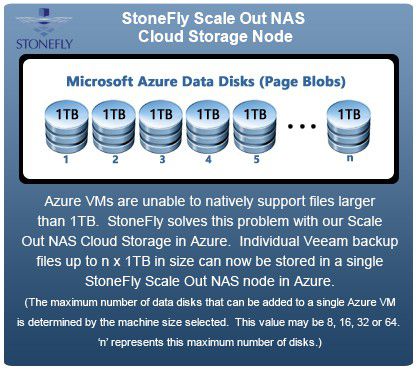
Another need for StoneFly to provide this technology came forward with the issue of eDiscovery and Compliance. Organizations now seek to keep records for a much longer time to extract useful information from it. Cloud backup has resolved this issue with Azure allowing for archiving of data for up to 99 years.
Data Protection and Disaster Recovery
StoneFly provides data protection and disaster recovery in three procedures.

The back-end provisioned storage is amassed with all the advanced features such as snapshots, read-write snapshot volumes, synchronous replication, optional hardware-assisted data deduplication, thin provisioning and more.
A combination of Snapshots and Replication results in a high availability and ability to instantly overcome disaster. StoneFly’s procedures have resulted in increased disaster recovery which has helped in achieving spontaneous business continuity.
We make sure that our customers are always satisfied by ensuring that the wheel of work keeps turning. Business continuity is a must; by decreasing down time due to disasters, we make sure that the business of our customers always moves forward.
StoneFly Carrying Customers Forward
StoneFly’s Scale-Out Cloud Storage in Microsoft Azure provides a handful of benefits to the customers:
- Ending the limitations in storage – Scale-Out allows for nearly an unlimited amount of storage across multiple nodes.
- Increased performance – More nodes resulting in data throughput aggregation.
- Ease of access – Access a file stored in any storage from any node in the Scale-Out.
- Economical – Payment per terabyte.
- Backup and replication – Simple, fast and secure data access on-premise or cloud.
- Ease of use and availability – No threats of business being stopped.
- Customer centric and easy management – All the Cloud Storage nodes in the StoneFly Scale Out configuration in Microsoft Azure are managed through one GUI login.
StoneFly has taken it upon itself to provide only the best backup and disaster recovery solutions to its customers. All the powers lie in the hands of the customers while StoneFly keeps itself busy in providing the best possible experience to its customers.










